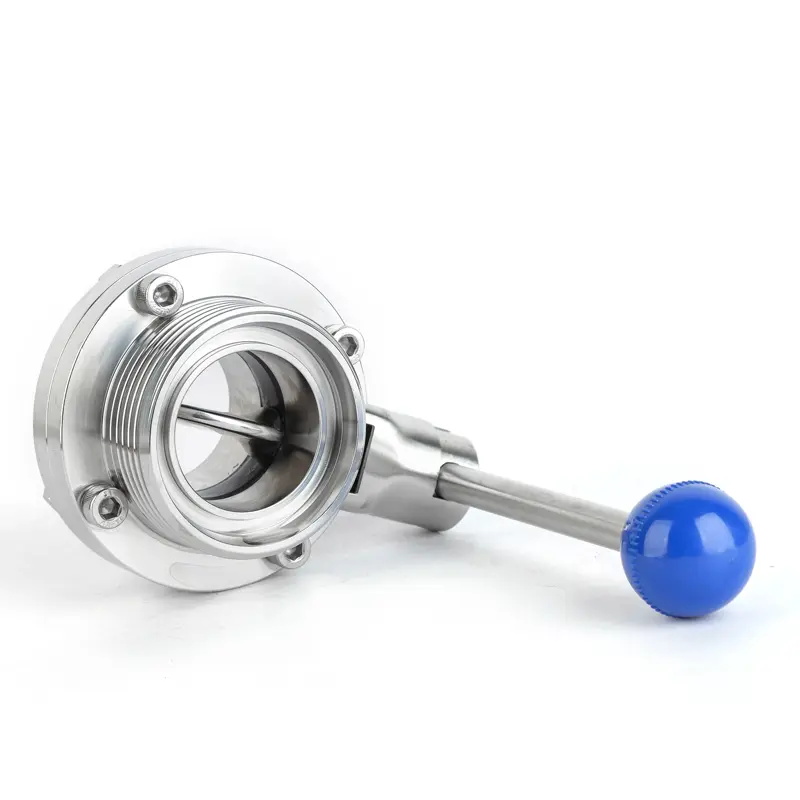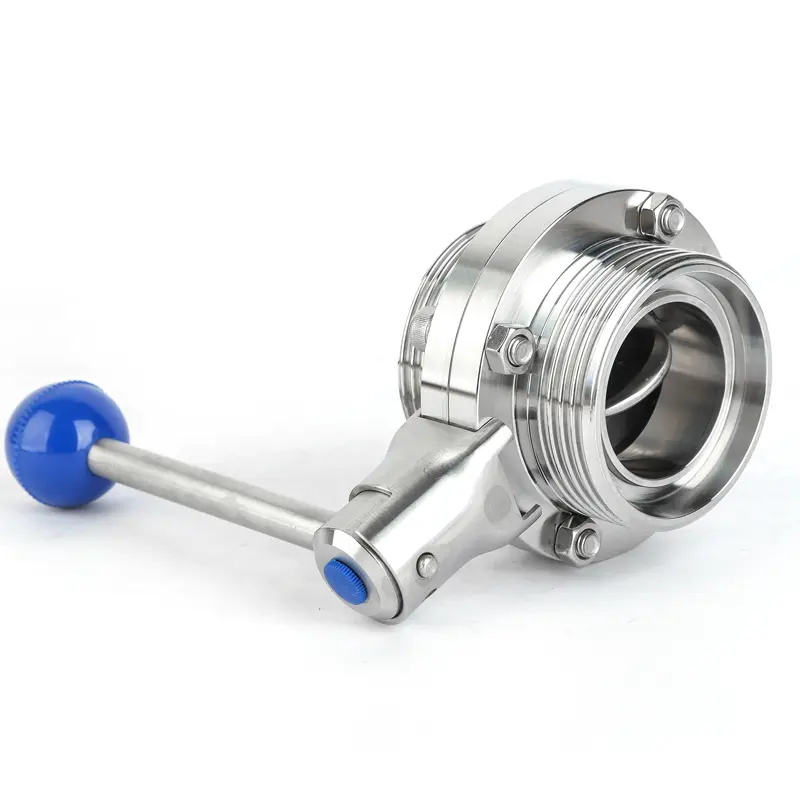Sanitary butterfly valves are known for their ability to control flow in food, beverage, pharmaceutical and other industries. The valve is designed to prevent contamination and ensure hygiene compliance during manufacturing. In this blog, we will detail the main features and benefits of sanitary butterfly valves, as well as the precautions users should take to improve safety and extend valve life.
Structure and main features
The sanitary butterfly valve is composed of several key components, including rubber seal ring, valve plate, valve body, valve stem and handle. The rubber sealing ring and valve plate are specially imported to ensure long-term performance and service life. At the same time, the valve body is precisely processed by a high-precision CNC lathe to ensure interchangeability and avoid the common problems of replacing rubber parts.
The stem is studded with a nylon bushing for frictionless movement when opening or closing the valve. All steel parts are made of stainless steel, while the rubber parts of the valve are made of food grade rubber to ensure compliance with regulatory hygiene standards. The disc is streamlined and narrow to allow fluid flow in a consistent direction and reduce flow resistance and the potential for material buildup.
Use environment and precautions
Sanitary butterfly valves are commonly used in high pressure industrial environments such as the food, beverage and pharmaceutical industries. Application of valves in such high pressure environments requires special precautions to avoid user injury and unnecessary downtime.
Before using the valve, it must be inspected to ensure that the valve is installed correctly. Make sure the flow direction of the valve is aligned with the pipe, and that the handle and lever turn in the correct direction when opening and closing the valve. Also, make sure to properly clean and sanitize the valve to remove any debris that may interfere with its operation.
For increased safety and the life of the valve, follow recommended operating guidelines, including not overtightening the valve or overtightening the lever or handle. If a valve starts to fail, do not try to force it, but refer a professional technician to carry out inspection and maintenance procedures.
summarize
Sanitary butterfly valves are critical components in the food, beverage and pharmaceutical industries, used to control flow and prevent contamination. The construction and features of this valve, including its streamlined design, food-grade rubber components and removable connections, make it ideal for maintaining a high level of hygiene. Users should take precautions, including proper installation, cleaning, use and maintenance, to ensure optimum performance and a longer service life of the valve.


Post time: May-16-2023
